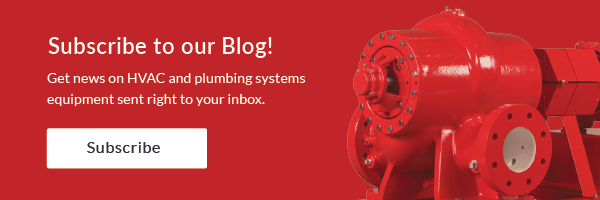Steam heating systems are a bit of a mystery for many engineers and contractors. Much of the “old school” knowledge on steam heat exchangers retired years ago. With the limited number of new steam systems being installed today, this subject is rarely covered with any detail. Most healthcare facilities and some industrial facilities use steam in processes. Even though there are few “new” heating steam systems installed, there are existing steam heating systems that the engineer is called on to renovate or the contractor is called on to troubleshoot.
We’ll explore the basics of steam and steam heat exchangers in the upcoming weeks.
Where Is Steam Used in Healthcare?
Most healthcare facilities and some industrial facilities use steam for humidification, sterilizing instruments, and possibly steam heat exchangers. R. L. Deppmann offers a variety of seminars on the specifics of applications in these buildings.
Where Is Steam Used in Commercial and Educational Buildings?
Even though there are few “new” steam heating systems installed, there are existing steam heat exchangers that engineers and contractors are called on to renovate or troubleshoot. Many older educational K-12 and university facilities may have one or two pipe steam systems. Many large cities have central steam distribution systems to downtown office buildings.
The Steam Basics Series
This series covers the simple basics of steam in HVAC systems. We’ll address many subjects, but will center them on the steam entering a heat exchanger or convertor. The topics over the next few weeks will be….
- Why are most steam-to-water heat exchangers in building services provided with low-pressure steam rather than medium or higher pressure?
- Why do I need a vacuum breaker and where should it be located?
- What size steam pipe should enter the heat exchanger?
- Why is the rule of thumb 14” for the drop leg to the steam trap from the Heat Exchanger Shell?
- Condensate pipe sizing and flash steam
- Is there a difference between steam strainers and condensate strainers?
- Types and sizing of traps
- Lift vs. gravity returns out of heat exchangers used for domestic water and hydronic heating
- Temperature of condensate and condensate return units
- Condensate pumps discharge piping
- Saving energy with vent condensers
- Flash steam and flash tanks
Thank you for using products sold by R. L. Deppmann! We look forward to next week’s steam pressure topic.
Discover more on our Heat Exchanger Series below:
Part 2: Why Use Low Steam Pressure?
Part 3: Vacuum Breakers: Steam and Steam Heat Exchanger Basics
Part 4: Condensate Drop Leg and Pipe Size
Part 6: Steam Condensate Pipe Sizing
Part 7: Steam and Condensate Pipe Sizing Health Care Example


